Mountain Goats “Stuck” on Peaks, Orchids “Emitting” Praying Mantises, and Moths Disguised as Dead Leaves… They Are Masters of Camouflage.
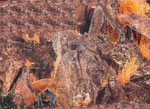 |
|
Two mountain goats with rusty brown and black fur (SVJ) |
Color Homochromy
In the photo below, you can see two mini oreotrague mountain goats. One is clearly visible in the center, but the second one is nearly impossible to spot. Thanks to its rusty brown and black fur, it becomes almost invisible in the rocky terrain, making it difficult for hunters and predators to detect. This camouflage strategy is known as homochromy – blending in with the environment, which proves to be very effective in the animal kingdom. However, it only works for those who prefer to linger in their native habitats. When they venture into a different environment, like a lush green meadow, they become easy targets.
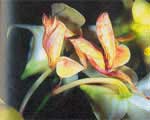 |
|
Orchid emitting… a praying mantis! (SVJ) |
The Orchid Emitting… a Praying Mantis
Don’t be deceived by the delicate colors of the orchid flowers. Because lurking within is a praying mantis waiting to ambush! As the king of camouflage, the skin of this orchid mantis perfectly matches the petals it uses as a hiding spot. Remaining perfectly still, it waits for an unsuspecting insect attracted to the beauty of the orchid to come close and… snap! It will be devoured.
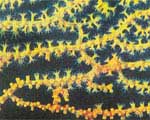 |
|
A dwarf seahorse clinging to a coral branch with its tail. (SVJ) |
Like a Thorny Stick
No, these coral branches are not the only creatures in the picture. Looking closely at its tail, you’ll spot a tiny seahorse clinging on. It curls up into a shape no longer than 1 cm. But this size is not its only asset. With a pale yellow color and spines that mimic the coral branches, this camouflage technique is known as homotypy – resembling the same type, which can help it survive longer. Especially when it is not an adept swimmer and has numerous predators eager to devour it.
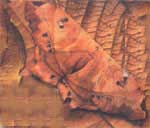 |
|
A moth resting on a dry leaf. (SVJ) |
The Dead Leaf That Lives
If there were a competition for the best disguise, the moth would definitely win first prize. During the day, when perched on a dry leaf, no one can spot them. They disguise themselves so cleverly that their wings have tattered edges resembling leaves gnawed by insects. This is the best way to evade predators, whether they are carnivores or herbivores. After all, herbivores also know how to choose green leaves over withered yellow ones.
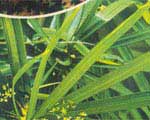 |
|
A green pit viper camouflaged among the grass. (SVJ) |
Death in the Grass
Enthusiasts of toads and frogs, who like to observe their behaviors in the grass, should be cautious. Among the bushes lurk three species of green pit vipers that are exceptionally good at hiding. Their green color closely resembles leaves, making them nearly impossible to detect. Or by the time they are spotted, it may already be too late.
Like a Rock
 |
|
A gray seal basking on a rock by the beach. (SVJ) |
How can a gray seal lie basking on a rock by the beach without anyone noticing? Only a gray seal can do that. However, no matter how clever it is, it cannot escape the watchful eyes of paparazzi. It is fortunate for the journalists because typically, no one recognizes this seal. This way, it can survive in the wild. Due to its waddling gait on land, it is very vulnerable if spotted.
(To be continued)


















































